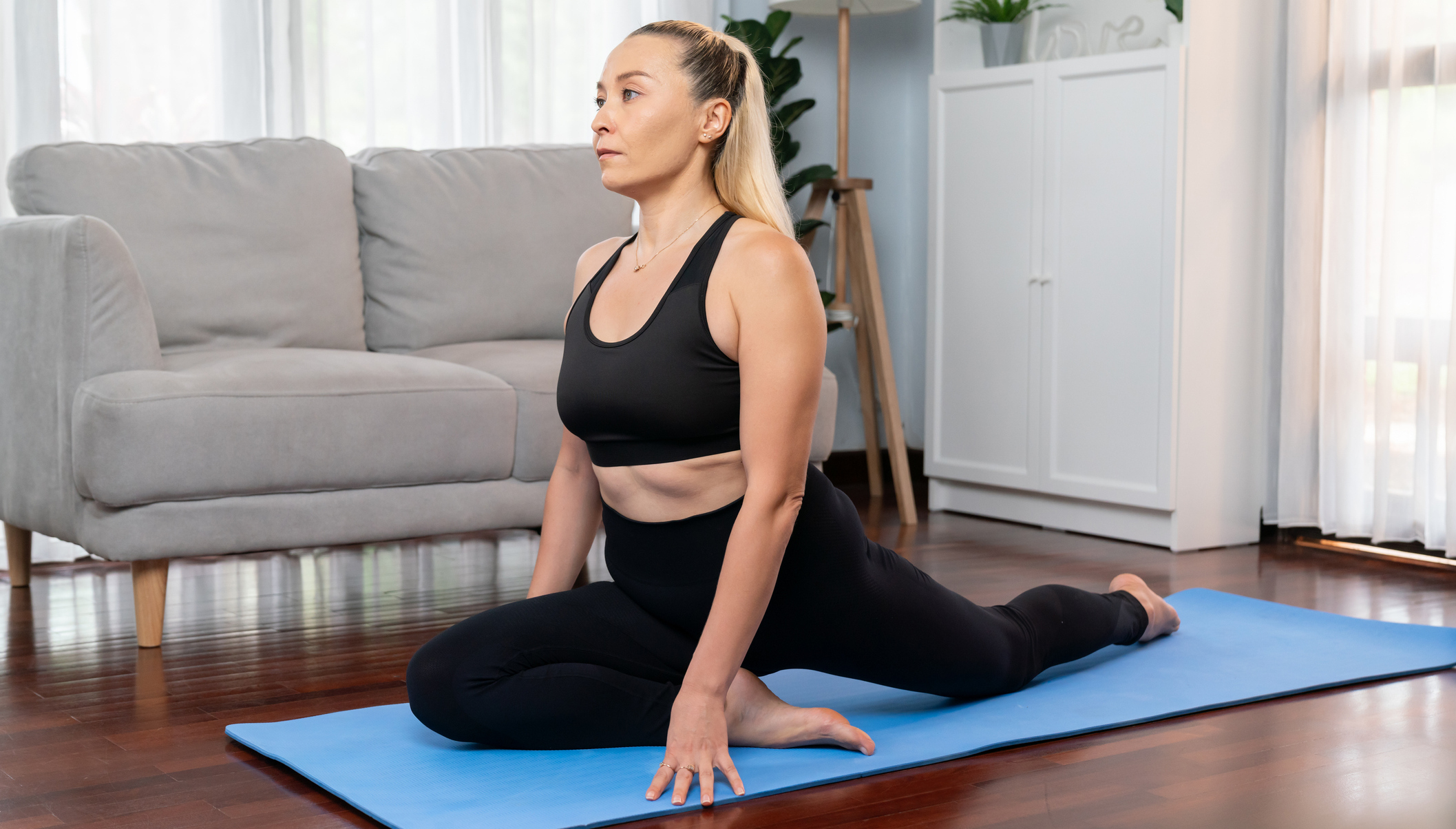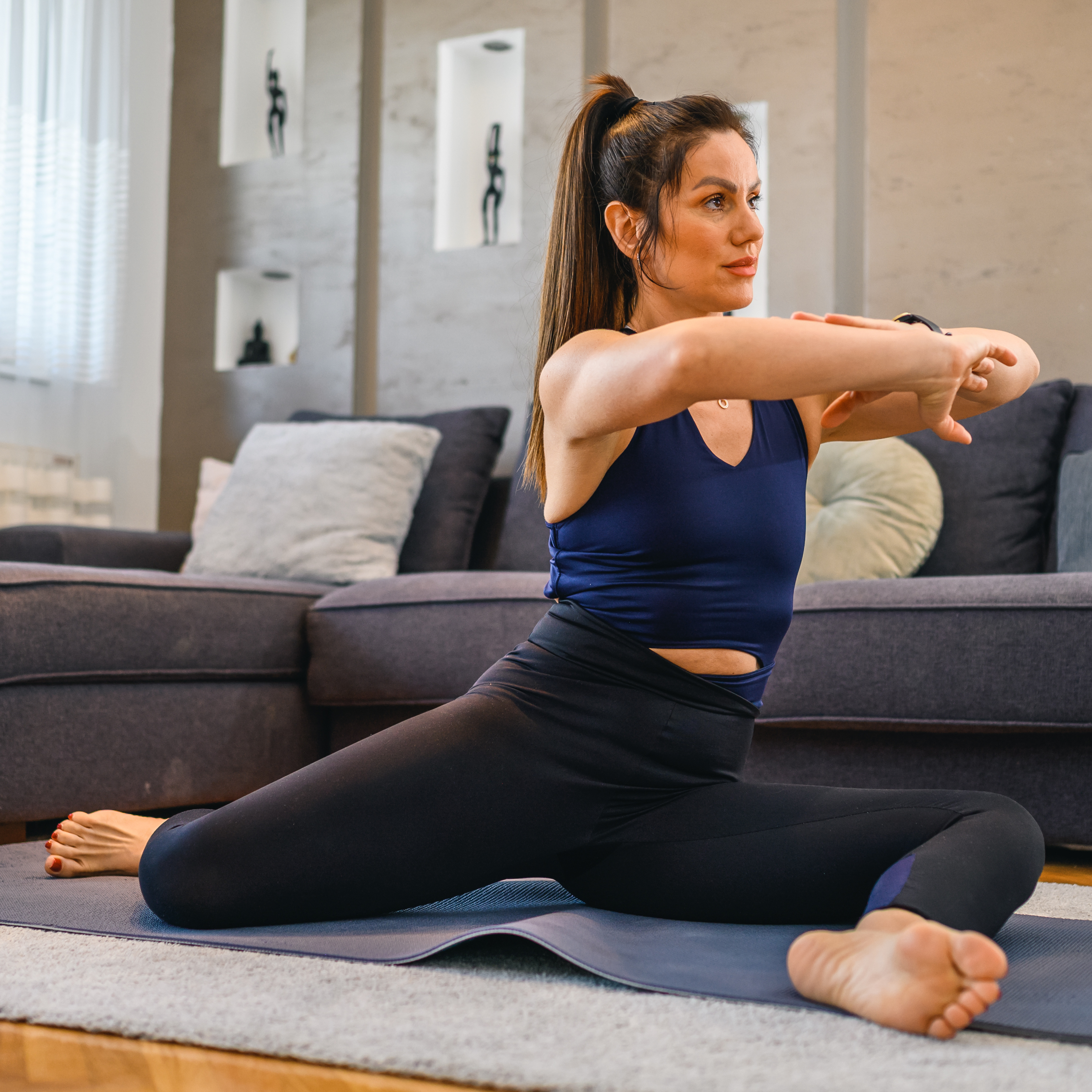I've been running for 20 years and this is my favorite stretch for tight hips
The pigeon stretch releases tension in the hip flexors and glutes to make it easier to run

Tight hips are a problem many runners suffer from. Running involves the shortening of the hip flexor, the muscle at the front of your hip joint that pulls your leg up as you take a stride. If your hip flexors rarely get stretched out, this can lead to them becoming chronically shortened and uncomfortably tight. This can be exacerbated by long periods of sitting.
So it's great to have a go-to stretch that can release some of that tension and improve mobility. I've been running for 20-odd years and the pigeon stretch is my all-time favorite remedy for tight hips. I was introduced to it in yoga and Pilates classes, and found it helped with my perennially tight hips from running.
Master trainer at The Gym Group, Jenni Tardiff, also recommends this stretch and for runners in particular. "Stretching the hip flexors out can release any tension stored within the muscles and increase the range of movement within the hips," says Tardiff.
The pigeon stretch can also release tightness in the glutes, which can improve your running form too. "If the glutes are tight this will also reduce the range of movement within the hips," says Tardiff, "and you won't be able to drive those knees up while running."
Doing this stretch three or four times a week should make a noticeable difference.
How to do the pigeon stretch
Video credit: LPETTET / Getty Images
- Start on your hands and knees on a mat.
- Bring your right knee towards your right hand, placing it on the floor near your right wrist.
- Bring your right foot towards your left hand, so your shin crosses the mat on a diagonal underneath your torso.
- Extend your left leg behind you, keeping the knee and top of the foot on the floor.
- Lower your hips, keeping them level.
- Aim to hold the stretch for 10-30 seconds at a time on each side, and repeat it three to four times.
Keep your chest lifted to feel more of a stretch in your hip flexor. Alternatively, you can lower onto your forearms or stretch your arms out on the floor to feel it more in your glutes and to stretch out your lower back. You can put a block or a blanket under your right hip to offer some support and help keep your hips level.
Get the Fit&Well Newsletter
Start your week with achievable workout ideas, health tips and wellbeing advice in your inbox.
When to do the pigeon stretch
Although the stretch will help your running, you shouldn't do it just before a run. "The pigeon stretch should be performed after your run, keeping dynamic stretches for pre-run drills," says Tardiff. "Stretches like this can also be performed on separate session days as part of your other training sessions or prehab work."
Alternatives to the pigeon stretch
The pigeon is not the easiest position to get into and while it's supposed to feel quite intense, it may not work for everybody. You do need a degree of flexibility in the hips and glutes to perform this stretch, and you certainly shouldn't feel pain in your front knee.
"If the pigeon stretch hurts your knee, it could mean that the hips are too tight to allow the legs to move into the correct position," says Tardiff. "As an alternative, to open up your hips you can perform a figure four stretch either seated or lying down. Another option would be to perform a butterfly stretch or 90/90."



Camilla Artault is a fitness writer with a passion for running and yoga. She interviews experts and writes about a wide range of topics for Fit&Well encompassing health, fitness and nutrition.